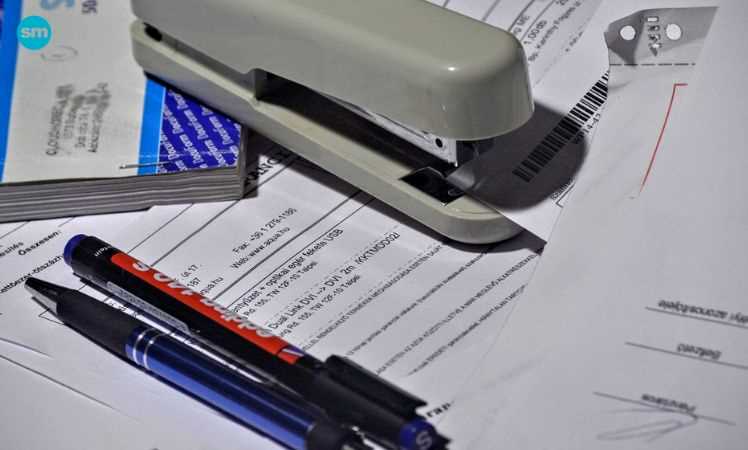Last Updated on December 29, 2023 by Lori Pace
We all know that juggling life as a single mom is like being the CEO of a high-stakes venture, where every day demands strategic finesse and a whole lot of heart. Sometimes though, you might find life tossing in extra challenges – like managing bills that stack up like unwelcome house guests.
When these moments call for financial reinforcements, loans can be your only allies. But here’s the deal: securing that loan means proving your income, which can sometimes feel like one more Herculean task on your never-ending list.
This is why, today, we’ll talk about the different ways to show lenders that you’ve got the financial muscle to repay a loan. Whether you’ve got pay stubs, tax returns, bank statements, or beyond, we’ll walk through it together and teach you how to use them to prove your income.
1. Tax Returns
Do you know how a snapshot captures a moment in time? Well, think of your tax returns as an annual financial snapshot – they lay out the whole story of your earnings over the course of a year.
So when you’re aiming to prove your income, whipping out your tax return is like serving up a full-course meal that satisfies every hunger pang a lender might have about your financial health.
These documents reveal a multitude of financial information, like total income figures, types of income (be it from salaries, investments, or a freelance hustle), and even potential red flags like write-offs that are larger than life.
If you serve up at least two years’ worth of tax returns, lenders can come up with an average income figure. They’ll also look for patterns, like steady or increasing income. If this is your case, you shouldn’t worry too much about getting the loan (unless you have other financial struggles).
2. Paycheck or Benefits
As a single mother who is struggling to pay the bills, you may find support in payday loans. It’s not the ideal way to dig your way out of financial problems since these don’t come without risks and pitfalls, but sometimes, it’s the only way.
If you’re in this situation, make sure you’ve done your research and calculations to make sure you won’t have to delay payments. Leaving the steep interest rates aside, if you can’t repay the loan on its due date, you’re up for a mountain of financial stress.
Since these are quick loans, you won’t be asked for a lot of documents. All you need is a steady source of income, a valid ID, and an active checking account. You can prove your source of income using your paycheck (if you are employed) or a benefit verification letter (which you can get online).
3. Pay Stubs (Even Lost Ones)
These little pieces of paper (or digital records) are pretty much the GPS tracking of your earnings. They tell a lender how much you’re pulling in every payday with no detours.
When you want to prove that yes, indeed, you’ve got a steady stream of cash flowing in, handing over a stack of recent pay stubs is kind of like showing off pictures from last week’s fishing trip – the proof is right there in your hand.
Usually, lenders will ask for about a month or two’s worth, which is just long enough to check your income stream is flowing constantly. But your pay stub sheds light on more than just gross income. It also breaks down taxes, contributions to retirement plans, healthcare bits, and bobs – the whole nine yards.
This finer detail matters because it shows what you truly take home after Uncle Sam takes his share and what you can actually spend or save. This is what lenders care about when they’re evaluating if you can comfortably manage new debt.
Now, if you’re not in the habit of keeping your pay stubs somewhere safe, you may feel a bit panicky. Luckily, you can recreate them online by using FormPros’ reliable pay stub generator. It’s an easy method to get your latest financial information in a digital format and send it to your future lender.
4. Bank Statements
Think of your bank statements as the breadcrumb trail through the forest of your finances. They show firsthand where the money comes from and where it goes. When you’re applying for a loan, this information can turn you from a faceless applicant into someone who’s got their ducks in a row.
If your salary or income takes the form of consistent deposits, that’s music to a lender’s ears. It sings reliability and steadiness, which are like comfort food for those deciding to lend you money.
Don’t forget that not only do wages count, but also any regular infusions like rent from properties or payments from side hustles. They’re all part of this ensemble cast that makes up your income story.
Now here’s a pro tip: tidy up that transaction history before you share it. You want those bank statements clean enough for lenders to follow the plot easily – no late-night snack purchases mingling with the important stuff. Boil it down so those income tidbits shine through without getting lost in other financial noise.
Wrap Up
Before you start frantically looking through your financial documents, keep in mind that knowledge is power. This is especially true when it comes to picking your lending partner. It’s a bit like finding a trustworthy babysitter for your precious little ones – you’ve got to do your homework to ensure they’re the real deal.
Dive deep into research mode and vet prospective lenders like you would any vital decision affecting your family. Remember, not all glitter is gold. Look beyond the glossy brochures and flashy promises. Seek out reviews, compare rates, read the fine print with an eagle eye, and listen to what other single moms are saying. Their stories could guide you away from hidden traps or towards those warm-hearted folk who genuinely want to help you thrive.


